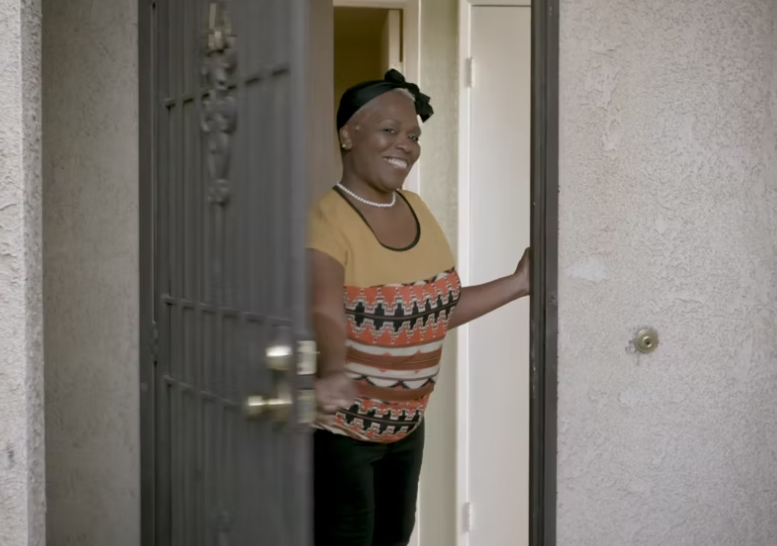The Los Angeles Homeless Services Authority (LAHSA) released data about the homeless rehousing system’s performance in 2020 during its first State of Homelessness Town Hall – an online event attended by over 1300 people. In 2020, LAHSA and its partners housed 20,690 people, placed 27,325 people in interim housing, provided outreach to 46,533 people, and served 5,500 people through problem-solving.
“The COVID-19 pandemic presented complex and persistent challenges for our system in 2020, but it also allowed us to show what we can accomplish with unprecedented coordination of local, state, and federal resources,” said Heidi Marston, Executive Director of LAHSA. “This year, we’re taking what we learned from our COVID response and are using it to build momentum across our system so that we can bring even more of our unhoused neighbors home.”
Marston began her presentation by explaining that decades of poor policy decisions by the state and federal governments led to stagnant wages, disinvestment in affordable housing, the destruction of the state’s mental health infrastructure, racist land-use policies, and a punitive criminal justice system that led to mass incarceration all contributed the homeless crisis that California and Los Angeles are experiencing today.
In addition, Marston highlighted that decades of restricting housing development has driven up prices and marginalized people of color. As a result, Los Angeles County has roughly the same number of housing units with a population of 10 million as it did when its population was 6 million. In total, the county needs over 509,000 units of affordable housing.
During her presentation, Marston spoke about the homeless rehousing system’s work during the early months of the COVID-19 pandemic. Marston noted that the government’s response to COVID-19 provided an infusion of state and federal funding to LAHSA and its partners. Those resources helped the homeless rehousing system give shelter to over 10,000 COVID-vulnerable people through Project Roomkey, the City of Los Angeles’s Rec and Parks emergency shelters, and the County of Los Angeles’s quarantine facilities.
The pandemic response also provided resources for the County’s Department of Health Services to create 30 COVID Response Teams that administered over 120,000 COVID tests, performed over 2,500 wellness checks, and distributed more than 3,000 and counting COVID vaccines to people experiencing homelessness.
Marston then shifted her remarks towards the rehousing system’s metrics for 2020 and announced that it housed over 64,000 people over the last three years or nearly all of Los Angeles County’s unhoused population on any given night as reported in the 2020 Point in Time Count. The homeless rehousing system reached this milestone, despite the 2020 housing placement number dropping 9% to 20,690.
“Once the pandemic came to our shores, our entire system shifted all of its resources and efforts to the life-saving effort of bringing people inside to shelter,” Marston added. “The office closures and social distancing required by the pandemic also slowed down the housing process. Our clients couldn’t file paperwork or view apartments with the same ease as they could pre-pandemic.”
The system lost 50% of interim housing capacity due to Centers for Disease Control social distancing requirements in congregate shelter facilities. Despite this setback, the number of people who entered interim housing rose by 5% to 27,325 in 2020. New interim shelter options such as Project Roomkey, City of Los Angeles Rec and Park shelters, and new A Bridge Home sites helped fill the loss of shelter capacity.
Meanwhile, the homeless system’s outreach efforts reached more people in 2020 than ever before. Over 240 teams with more than 850 members provided services to 46,533 people, a 20% increase over the previous year. The 240 teams consisted of 93 LAHSA Homeless Engagement Teams, 70 Department of Health Services Housing for Health teams, and Department of Mental Health HOME teams who offered various services including interim housing placements, mental health, and substance abuse treatment.
Marston acknowledged that Angelenos are seeing more tents and encampments in places that they aren’t used to seeing them. However, she clarified that those encampments are largely due to the Centers for Disease Control’s orders for the unsheltered to shelter-in-place during the pandemic.
Marston also reported that the rehousing system prevented over 5,500 Angelenos from falling into homelessness in 2020 through a growing system of triage work called problem solving. Through problem solving, the homeless rehousing system provided legal eviction support or rent assistance to people who were at risk of losing their housing within 30 days and did not have the resources to keep their homes.
“These numbers clearly show that the homeless response system continues to make significant progress towards ending homelessness in Los Angeles County,” continued Marston. “However out system cannot end homelessness alone. Our government partners must make significant investments in the prevention and housing creations systems if we are going to truly end homelessnes.”

